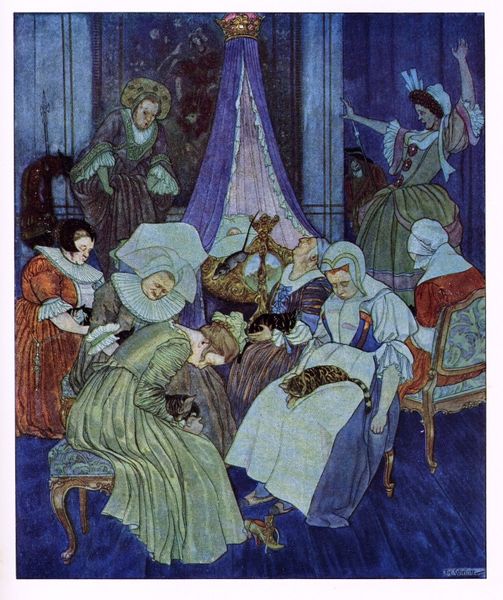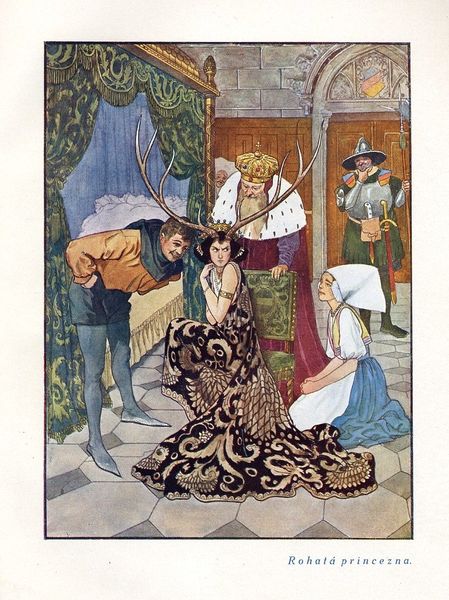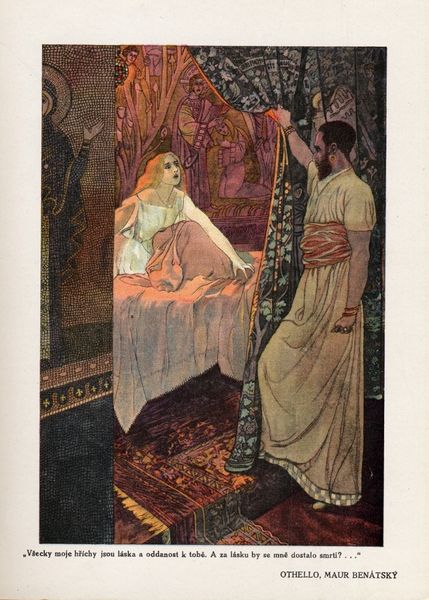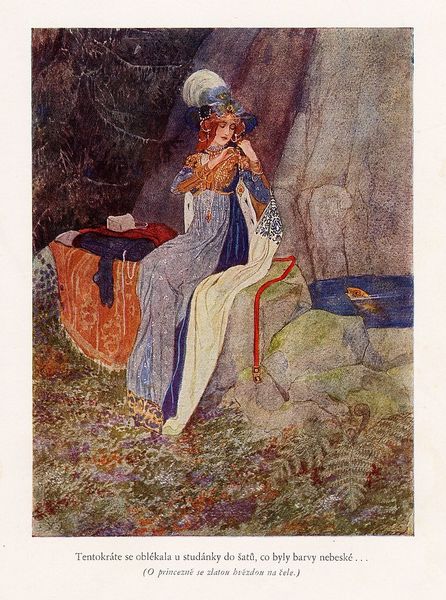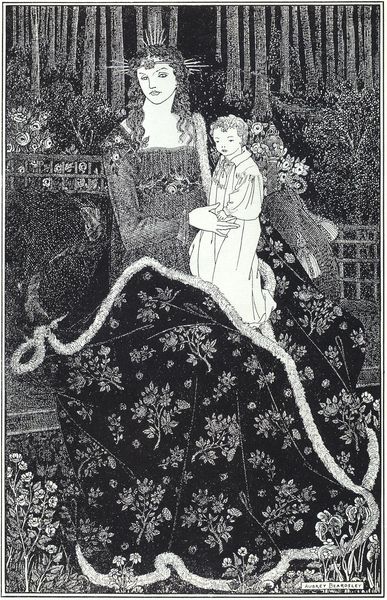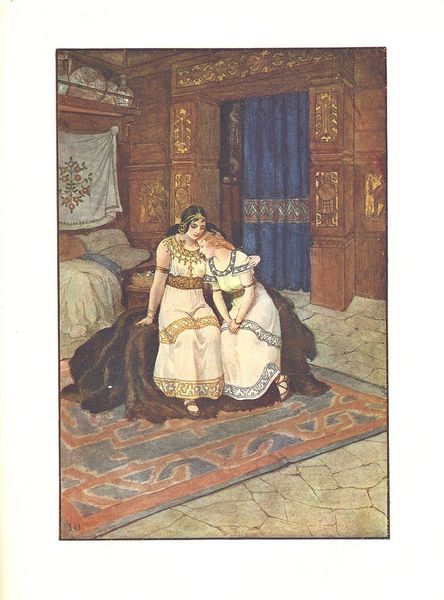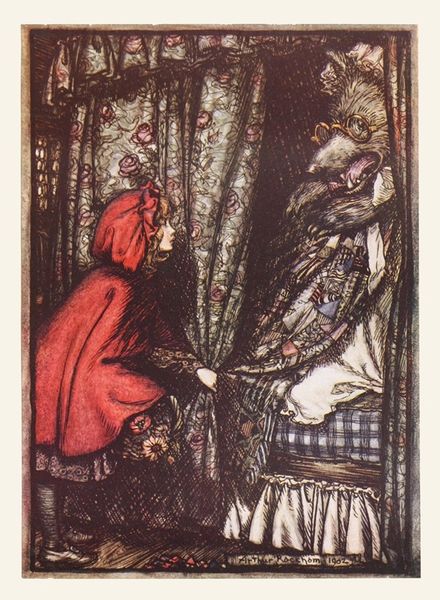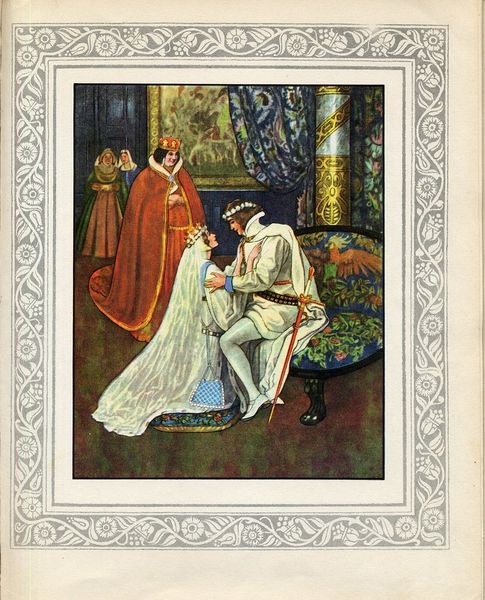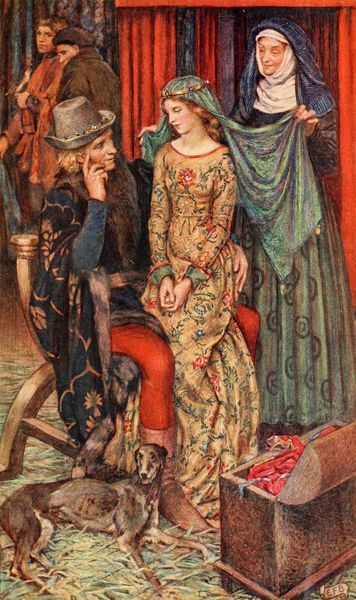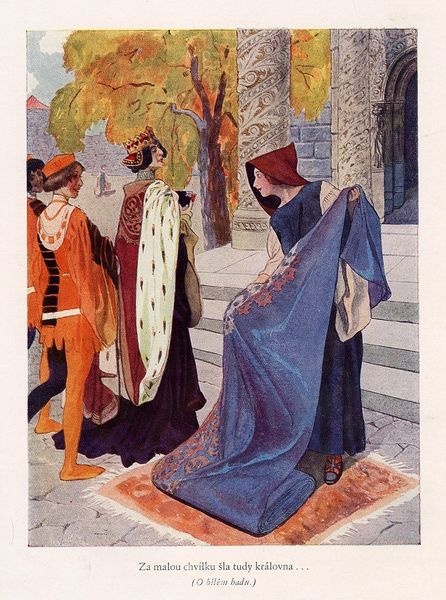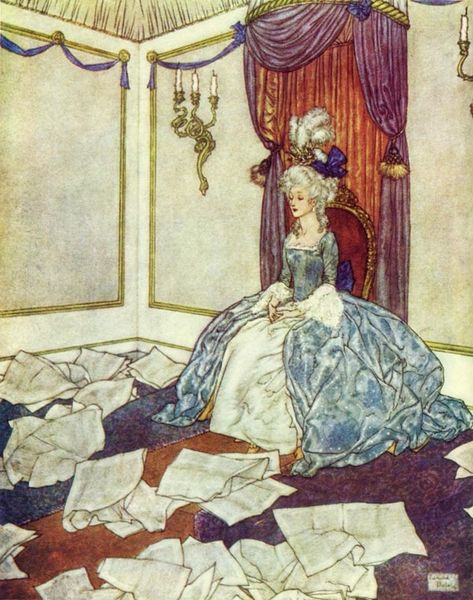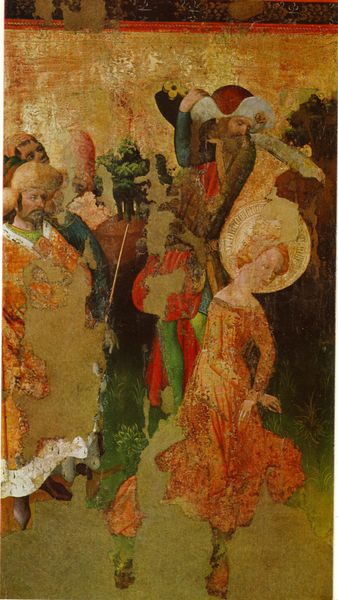
painting
#
portrait
#
fairy-painting
#
narrative-art
#
painting
#
figuration
#
romanticism
#
genre-painting
Copyright: Public domain
Curator: Artuš Scheiner, while not precisely a household name today, invites us into a world steeped in folklore and romance. This illustration, designed for Božena Němcová's collection of fairy tales, is a perfect example. Editor: It immediately evokes a sense of unease, despite the fairytale subject matter. The dark figure lurking behind the throne—almost menacingly, really—contrasts sharply with the delicate princess. Curator: That unease, I would argue, is a reflection of the socio-political undercurrents present even in Czech fairy tales. Němcová, a significant figure in the Czech National Revival, used folklore to explore themes of social justice and female empowerment. What appears as simple fantasy can also be viewed as commentary on societal structures. Editor: I see the contrasting symbolism, especially given your point about Němcová. The princess, adorned with those heraldic crests on her robe, symbolizes a kind of established, possibly even oppressive power, while the figure lurking behind her could represent something wilder, a primal force—something outside the realm of societal norms. That figure appears quite demonic in the European folk tradition, representing the marginalized aspects of the self or even suppressed rebellion against authority. Curator: Absolutely, consider that folklore provides a space where forbidden desires and societal anxieties manifest themselves. And here, Scheiner seems aware of that duality, playing with it to generate this tension. Even her attire suggests that confinement or expectation of decorum and duty; these expectations come into question. Editor: Note the patterns on the walls, they recall something historic, a cultural grounding of the characters here. We could see that figure in shadows there as the archetype for that testing of those restrictive walls of society and psyche. A rebellion—almost self-authored. Curator: These tales, like Scheiner’s work here, speak to persistent questions of national identity, of justice, and perhaps of challenging ingrained power structures. Editor: An uncanny harmony of terror and beauty—this scene shows a tension inherent to those enduring stories we find in childhood—they’re never quite as innocent as they appear, are they?
Comments
No comments
Be the first to comment and join the conversation on the ultimate creative platform.
